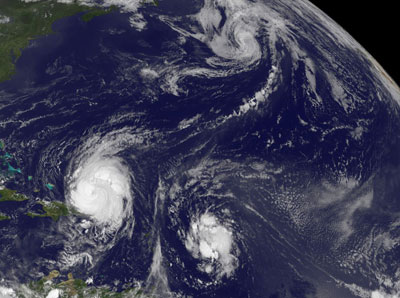| ||
|
But he's not a nice kind of guest. He's messy and potentially dangerous. The only thing to do is get ready.
A statement from Environment Canada's national hurricane centre on Wednesday morning said Earl is still a long way off from the Maritimes and it's too early to issue warnings or make predictions about possible damage when the hurricane hits.
The hurricane centre would only say "the public should certainly pay close attention regarding weekend plans that may be sensitive to wind and rain conditions."
At this point forecasters are calling for a 75 per cent chance of at least gale-force winds between 60 and 70 km/h in Nova Scotia.
When leaving Dalhousie on Friday, faculty and staff should take extra care to shut windows. As well, things outdoors like chairs, barbecues and propane tanks should be taken inside or secured.
"Just take a quick look around and take a look for what could be blown around," advises Mike Burns, Dal's new head of security.
He's got some advice for storm watchers too. A hurricane is no time for sight seeing, he says. It can bring down trees and power lines and can kick up waves and winds that are extremely dangerous. It's a good idea to stay away from the waterfront and beaches where there could be storm surges or rogue waves.
"Yes, it's exciting, but the ocean is unpredictable and unforgiving," he says.
LINKS: Is your family prepared? | Canadian Hurricane Centre | Environment Canada Weather Office's latest statement
If a hurricane watch or hurricane warning is issued:
(Source: Nova Scotia's Emergency Management Office) |


